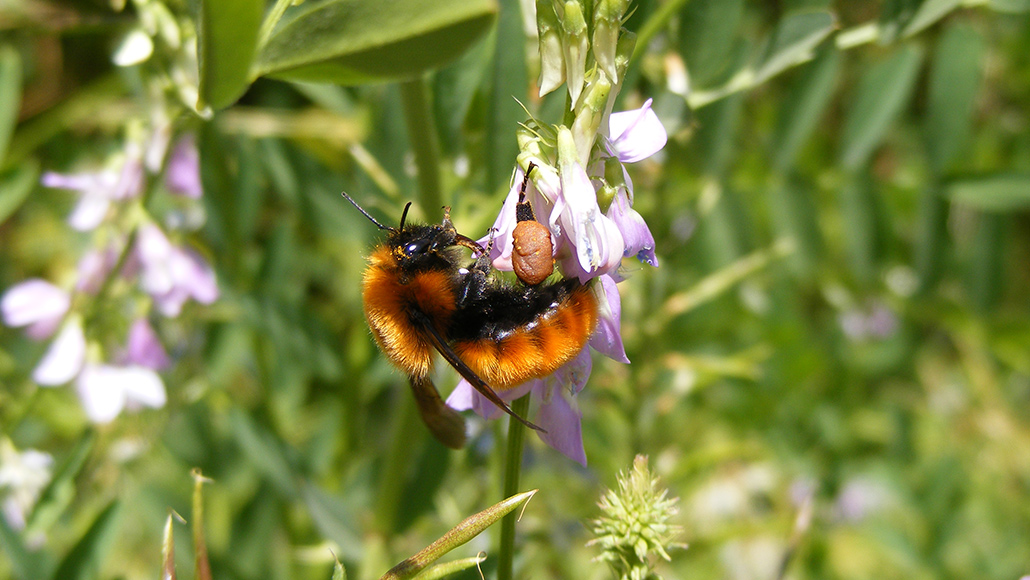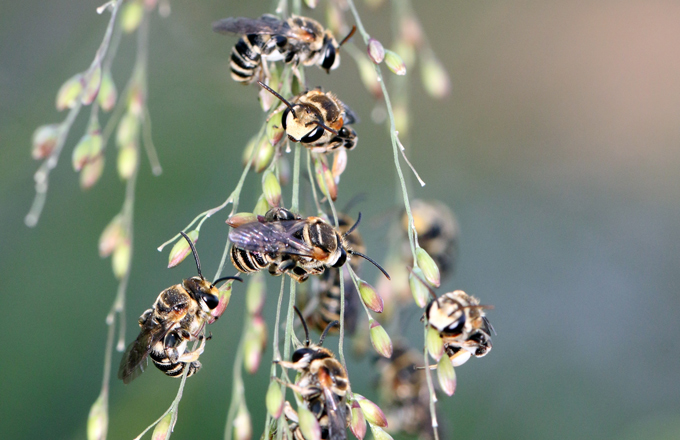Collectors find plenty of bees but far fewer species than in the 1950s
A look at global insect collections suggests bee diversity has dropped sharply since the 1990s

A new study reports recent massive losses in bee diversity worldwide. Many bees, such as this endangered Bombus dahlbomii bumblebee, found in Chile, are threatened by habitat loss and diseases spread by invasive European bees.
Jose Montalva/Flickr (CC BY-NC-SA 2.0)
Far fewer bee species are buzzing across Earth today, following a steep decline in bee diversity during the last three decades, according to an analysis of bee collections and observations going back a century.
About half as many bee species are turning up in current collecting efforts for museums and other collections compared with in the 1950s, when surveys counted around 1,900 species a year, scientists report December 10 at bioRxiv.org. That high diversity in collections endured for several decades, but then began to plummet around the 1990s, likely reflecting a real drop in global bee diversity, according to the study, which is under peer review.
“This is the first study suggesting that bee decline is a global process, and that the most significant changes have occurred in recent years,” says Margarita López-Uribe, a bee evolutionary ecologist at Penn State who was not part of the new research.
The new work evaluates global trends in bee diversity since the 1920s by tapping the database of the Global Biodiversity Information Facility. This international data-sharing network holds what López-Uribe describes as “the most comprehensive dataset of insect collection records worldwide,” including photos of bees in the field and of museum specimens dating back to the 18th century. Previous bee studies have reported falling populations, but evidence has often been limited to Europe and North America. Numbers of western honeybees (Apis mellifera) have been decreasing in North America and Europe (SN: 6/20/19), for example, but have increased in Asia, Africa and South America. For bees overall, though, the global situation was unclear.
Eduardo Zattara and Marcelo Aizen of the Pollination Ecology Group at the Biodiversity and Environment Research Institute in Rio Negro, Argentina, found that the number of instances of observing bees has climbed in recent decades, probably due to more researchers going into the field to document and study bees.
But the number of observed species fell. In the 1950s, collectors added about 22,000 bee records per year, of about 1,900 species each year, for a global total of 5,600 species collected over the whole decade. After correcting for sampling effort, the researchers estimate that about 6,700 species would have been found in the wild. In the 2010s, collectors tallied an average of 860 species per year from an average of more than 37,000 observations per year, leading to an estimate of only about 3,400 species to be found worldwide in the wild.

Declines in the number of species occurred on nearly every continent, starting at various points in the last four decades but largely in the 1990s on most continents. One exception was Australia and nearby islands, where the number of bee species estimated from observations spiked from about 300 to 500 in the 2000s. But species numbers in that region dropped back to 300 in the 2010s. Globally, thousands of bee species have become so rare that they are difficult to find or have gone extinct.
These findings should convince people that bee diversity losses are not confined to specific regions, but “part of larger, worldwide trend,” says Zattara, who is now a visiting scientist at the Smithsonian National Museum of Natural History in Washington, D.C.
While the study provides an “invaluable” overview, the dataset is surely missing important insect collections from Asia, says bee biologist Natapot Warrit of Chulalongkorn University in Bangkok. He hopes the study encourages other researchers in the region to study and share data on pollinators.
Bees and other insects such as butterflies and flies pollinate more than 75 percent of the most important crop types grown today, scientists say. But these pollinators face multiple threats including the expansion of monoculture crop cultivation, pesticides (SN: 1/17/18), climate change (SN: 9/24/15) and pathogens that can spread with the international bee trade (SN: 1/18/19). Researchers also have suggested bees may be at risk from power lines (SN: 11/12/19).
While their study reveals an ongoing “major global collapse in bee diversity,” the researchers aren’t trying to sound “gloomy or apocalyptic,” Zattara says. Rather, they hope the study prompts other scientists, policy makers and business leaders take action to reverse the decline.






